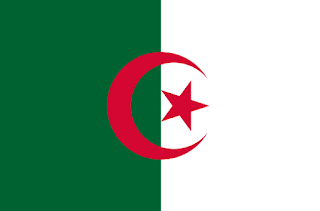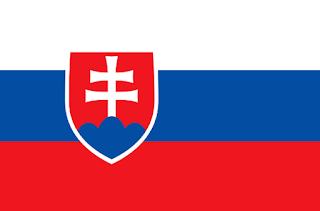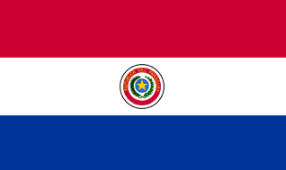FACTS ABOUT ROMANIA
AMAZING
FACTS ABOUT ROMANIA
1.
Bucharest is the capital city of
Romania.
2.
The total population of Romania is 21,529,967.
3.
The natives of Romania are called
Romanians.
4.
The Romanian leu (RON) is the official
currency of Romania.
5.
Romania shares a border with Bulgaria,
Hungary, Moldova, Serbia and Ukraine.
6.
The first written record of people
inhabiting the region of what is today Romania was in 513 BC. The kingdom of
Dacia endured invasions by Goths, Avars, Huns, Magyars and Bulgars during its
centuries of existence as a Roman protectorate.
7.
After the end of Mongul rule in the 15th
century, its history involved two Romanian principalities, Moldavia and
Walachia, and Transylvania, which was a Hungarian dependency most of the time.
The princes who ruled the first two became vassals of the Ottoman Empire until
all three were united under the rule of Michael the Brave in 1601.
8.
One of the world’s largest populations
of Roma lives in Romania. Still facing discrimination today, the Roma have been
persecuted throughout history in Europe. Many have left in order to improve
their lives, as the Roma have a high rate of unemployment, poverty and
malnutrition. They stand out anywhere in the country in their brightly colored
clothing, women in flowing skirts and men with white shirts and colorful
sashes.
9.
Romanians in the urban areas wear
Western-style clothing. Those in rural areas sometimes still wear more
traditional clothing. Women wear wool vests and skirts with embroidery that
varies according to a woman’s region. Men wear pants with a belt and white
shirts. Hairstyles of women can indicate their marital status. Unmarried ones
braid their hair while married women cover their heads with a naframa (head
cloth).
10.
The Romanians’ largest meal of the day
is eaten early in the afternoon. Breakfast is typically bread with jam and
butter with tea. Lunch may start with an appetizer of Mitiei (grilled sausage
with garlic) followed by a soup, such as Borsch (cabbage soup) or Ciorba (lamb,
vegetables and mushrooms). Main dishes are usually of meat with vegetables
served for side dishes. Dessert may be placinte (pie) or baklava (nut and honey
pastry). Tuica (plum brandy) is popular too.
11.
Romania has seven UNESCO World
Heritage sites. These include: the Dacian Fortress of the Orastie Mountains;
the Churches of Modavia; the Villages with Fortified Churches in Transylvania;
the Churches of Moldavia; and the Wooden Churches of Maramures among others.
12.
Some notable Romanians who have made a
difference in the world include: Henri Coandra (invented the modern jet
engine); Nicolae Paulescu (discovered insulin); Eugen Pavel (inventor of Hyper
CD-ROM; and Petrache Poenaru (inventor of the fountain pen).
12.
13.
The flag of Romania consists of blue,
yellow and red vertical stripes. These stripes represent Transylvania, Moldavia
and Walachia, the three historic components of the combined country of Romania.
14.
Transylvania (which means ‘land beyond
the forest’) was the home of Vlad the Impaler who inspired Bram Stoker’s novel,
“Dracula”.
15.
One of the stars of the 1976 Montreal
Summer Olympics was fourteen year old Romanian Nadia Comăneci, a gymnast.
During the team competition, the score for her stunningly perfect routine on
the uneven parallel bars was displayed as a 1 on the scoreboard. The crowd quickly
learned that Nadia had scored a ten, the first perfect score ever awarded in
gymnastics, and the scoreboard had no zero for it. She would continue on to be
awarded six more perfect tens in the same games as well as three gold medals.
16.
Romania is situated halfway between the
North Pole and the equator.
17.
The capital of Romania is Bucharest,
also spelled Bucuresti.
18.
In a very remote area in Romania’s
Apuseni National Park, cave drawings were discovered that are around 32,000
years old. The 13 drawings of rhinos, buffalos, horses, and cats are in the
Coliboaia cave. Experts believe the drawings are very well preserved because
this area is not subject to flooding.
19.
In the Pestera cu Oase (“Cave with
Bones”) a human fossil was discovered in 2002 that is estimated to be between
37,800 to 42,000 years old, the earliest dated European human fossil.
20.
The tallest rock sculpture in Europe is
located in Romania. The statue of Dacian king Decebal is 135 feet tall and is
carved in a rocky bank near the Danube.
21.
An earthquake with a 7.4 magnitude
occurred in Romania in March 1977. The quake killed more than 1,500 people and
injured 11,000 more. Damages were estimated at over $2 billion dollars.
22.
In the city of Brad is The Gold Museum,
also known as the Mineralogical Collection of Brad. The only one of its kind in
Europe, it was founded 100 years ago and has a collection of over 2,000 pieces
of gold from all around the world.
23.
The world’s largest salt mine museum is
in Transylvania inside the old Turda Salt Mines. These massive mines were
formed by machine and hand without using explosives.
24.
Pele Castle was Europe’s first castle
lit entirely by electrical current. The castle’s own plant produced the
electricity. Still functional and used today, the castle’s central heating system
was built in 1888.
25.
The first city in Europe to have
electric street lights was Timisoara, Romania (1889).
26.
In 1986, Steaua Bucureşti (Bucharest’s
soccer team) won the European Cup. They are the only team from a Communist
country to ever do so.
27.
The second largest building in the world
is the Romanian Palace of Parliament. It is second only to the Pentagon in the
United States.
28.
Bram Stoker’s “Dracula” is not the only
famous novel inspired by Romania. So was Jules Verne’s “The Castle in the
Carpathians”.
29.
Bucharest is home to thousands of stray
dogs. Approximately 10,000 people are bitten by these abandoned dogs every
year. Be careful and watch where you step.
30.
Near the Ukrainian border is the Merry
Cemetery. Local woodcarver Stan Ion Patras designed it in 1940 and it is both
tourist destination and open-air museum. Known for its colorful carved wooden
crosses painted with scenes of the deceased’s life, each tombstone features a
funny poem about the decedent. It is said to be the happiest cemetery on earth.
31.
Prince Charles of Great Britain loves
the beauty of Romania and admires the spirit of her people. He visits often and
owns land in Transylvania.
32.
Instituted on January 1, 2011, Romania
implemented a black magic tax. Witches and fortune tellers are recognized in
the country as legitimate business people. As such, they are subject to taxes.
Witches must carry a permit with them as well.
33.
The next year (1602) Transylvania became
independent again and the princes of Moldavia and Walachia made an ill-fated
alliance with Russia’s Peter I that led to Turkish domination of the country.
By the end of the 1828-29 Russo-Turkish War, with Russian forces occupying the
two provinces, they remained in the Ottoman Empire but became Russian
protectorates.
34.
During the Crimean War in 1854 Russian
troops finally evacuated Walachia and Moldavia and the Congress of Paris (1856)
at the end of the war established them as principalities back under Turkish
rule. Transylvania is still part of Hungary. The election of Cuza as the prince
of both of them prepared the way for the official union of Moldavia and
Walachia as Romania (1861-62). Constantin Maruzi was the first Prime Minister.
35.
King Carol I became ruler in 1866 after
Cuza was deposed in a coup. During his reign the country established an Air
Force and its first oil refinery and Bram Stoker published “Dracula” based on
Vlad Tepes. He is followed by his nephew King Ferdinand I.
36.
With the start of World War I Romania
joined Britain, Russia and France against Germany and Austria-Hungary. After it
ended, in 1918 Romania took Transylvania away from Hungary and Bessarabia
(taken away by Russia in 1812) became one with Romania again. The West
recognized all these changes in the Treaty of Trianon in 1920. Romania also
became a founding member of The League of Nations the same year.
37.
In 1927 King Ferdinand died and his
grandson became King Mihai I. The Iron Guard, a Fascist group, was also formed.
The 1930s was a decade of political change and unrest as the Nazis rose to
power in Germany and the Bolsheviks revolted in Russia. World War II saw
Romania bombed by both the Allies and Germany.
38.
After the war, the Communists gained
control of Romania by election fraud. In 1955 Romania joined the Warsaw Pact
and the United Nations. The Soviet Union withdrew its army in 1958 after 14
years of Romanian occupation. Then Nicolae Ceauşescu came to power and ruled
Romania with an iron hand, spending lavishly on a national palace and
government building for himself and the government while his people starved.
39.
Under Ceauşescu, Romania became the
first Eastern Bloc country to ever establish economic relations with the
European Community. He moved the economy from an agrarian one to an industrial
one by force. Finally, protests broke out in Romania in December of 1989 and a
speech by the leader was interrupted by rioters. The revolution ends four
decades of Communist control of Romania; Ceauşescu and his wife are executed.
Romania was the only country in the Warsaw Pact to end its communist reign
through violence and overthrow the government by force.
40.
Romania went through a difficult
transition from Communism to having a democratic government and a market
economy. The country joined NATO in 2004 and the European Union in 2007. It
also received an economic bailout from the International Monetary Fund in 2009
to save it during a severe recession. Today Klaus Iohannis is the
democratically elected President of Romania.
41.
Located in the southeastern part of
Central Europe, Romania shares borders with the countries of Bulgaria, Hungary,
the Republic of Moldova, Serbia and Ukraine as well as sits on the Black Sea on
its southeastern edge. The Danube River, after traveling through eight
countries, flows into the Black Sea in Romania and creates the Danube Delta,
one of the most biodiverse and stable wetlands in the world.
42.
The Carpathian Mountains, also known as
the Transylvanian Alps, make up around a third of the country. The hills and
plateaus that are rich with vineyards and orchards occupy about 36 percent of
the country. The final third is Romania’s fertile plains, the “breadbasket” of
the region. Forests abound and there are over 3,000 lakes plus many rivers and
streams. Some of the lakes are glacial lakes.
43.
The Carpathian Mountains are divided
into three different major ranges. These are the Eastern, or Oriental,
Carpathians, the Western Carpathians, and the Southern Carpathians, which are
also called the Transylvanian Alps. Their landscapes include terrains such as
karstic, volcanic and glacial. They offer great recreational activities,
including hiking, mountain biking, mountain climbing and river-rafting. Skiing
is also popular at resorts like Lake Balea, Paltinis and Sinaia.
44.
The Scarisoara glacier is underneath the
Bihor Mountains. More the 3,500 years old, it is Europe’s second largest
underground glacier.
45.
The Black Sea Coast in Romania occupies
a little over 150 miles. With its sandy beaches, cooling waters and low tide,
the area is a major tourist attraction from May until September. The beaches in
the Danube Delta actually expand into the sea by about 65 feet each year. The
Delta is a UNESCO Biosphere Reservation and a protected natural habitat and
wetland for rare species of animals and plants.
46.
Forests cover approximately one quarter
of Romania, with oak, elm, maple, beech, ash and linden as well as conifers
like pine, fir, spruce and larch filling them. Almost 34,000 different species
of animals can be found in the country, including deer, lynx, wolves, the
largest of all chamois species and over 6,000 European brown bears, the last
remaining in the continent.
47.
The Danube River is used for domestic
shipping as well as tourist cruises and international trade. Since the end of
Communism in Romania, tourism has been an ever-growing industry. In fact, it is
one of the least expensive places to visit and travel in all of Europe.
48.
Romania’s industries include petrochemical,
chemical, metal processing, machine manufacturing, textiles, transport and
industrial equipment, lumber and furniture. The country produces natural gas,
coal, petroleum, salt and iron ore as well. The land is blessed with
significant oil reserves and some of the largest gold deposits in all of
Europe.
49.
Agricultural products include corn,
sunflower and vegetable oil seeds, wheat, sugar beets, apples and wine grapes.
The livestock produced include sheep, pigs, cows and chickens. Romania is the
ninth largest wine producer in the world.
50.
Since the end of Communism, Romania’s
governments have been working on turning their economy into a market one. Two
long-term programs are under development: fisheries and forestry.
51.
The great majority of the population of
Romania are Romanians, followed by Hungarians and a very small percentage (less
than two percent) Vlax Romani or Roma (gypsies).
52.
The name Romania comes from the Latin
word ‘Romanus’ or citizen of Rome, a legacy from the days when the Romans
controlled ancient Dacia. Romanian is the country’s official language and it is
1,700 years old.
53.
Based on old Latin, Romanian is a
Romance language, like those of Greece, Germany, France, Spain, and Turkey. It
contains words from these languages as well, plus some from its surrounding
Slavic languages. It is the only Romance language spoken in Eastern Europe and
because it’s a phonetic language, words are pronounced just as they are
spelled.
54.
Romanians are a hospitable and generous
people. Foreigners who try to speak Romanian will get positive reactions from
the locals, who appreciate the effort you have made. Guests are always offered
food.
55.
National pride in Romania’s resilience
and ability to withstand all the attacks it has survived is part of the
population’s national identity. Romanians are a poor people presently, with
unemployment at 11 percent and their standard of living below that of most of
Western Europe. But they are a hard-working people as well.
56.
Romania Exports:
machinery and equipment, other manufactured goods, agricultural products and
foodstuffs, metals and metal products, chemicals, minerals and fuels and raw
materials.
57.
Romania Imports:
machinery and equipment, other manufactured goods, chemicals, agricultural products
and foodstuffs, fuels and minerals, metals and metal products and raw materials.
58.
The internet country code for Romania is
.ro.




Comments
Post a Comment